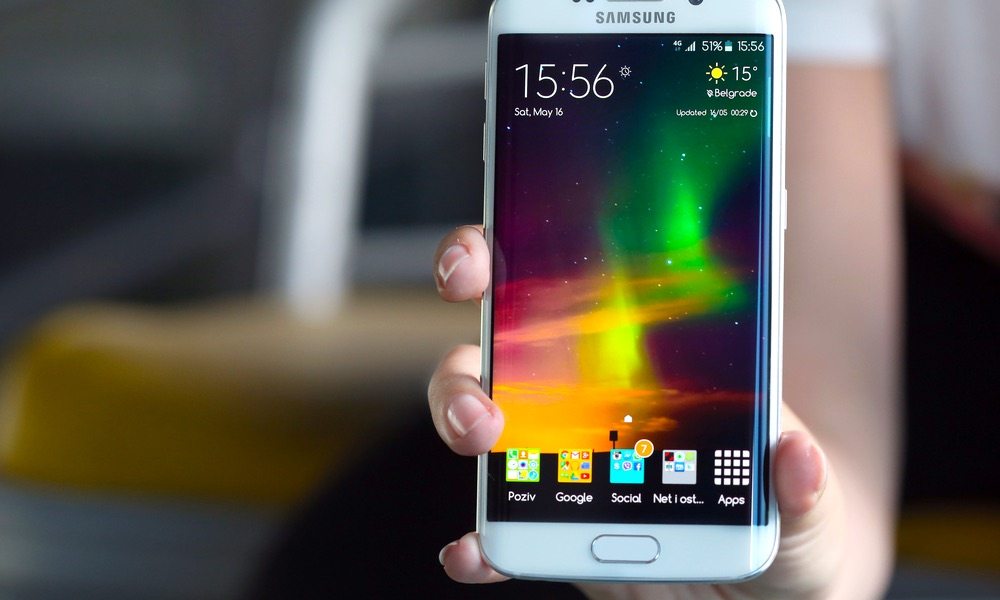Battle of the Flagships – Samsung Galaxy S7 vs. Apple iPhone 6s

Toggle Dark Mode
Samsung just recently pulled the wraps off its newest flagship devices — the 7th generation Galaxy S7, and the 2nd generation Galaxy S7 Edge. And while both of these devices share several of the features currently employed in Apple’s iPhone 6s, there are many more differences between the two than there are similarities.
In the case of sameness, Samsung’s Galaxy S7 will come in two iterations — the standard S7, and a more premium device, the Galaxy S7 edge — similar to how Apple’s iPhone 6s is currently offered in both the standard and Plus versions. Insofar as bare bones technical specifications are pertinent, however, the following is a brief comparison of the two devices.
Samsung Galaxy S7/S7 Edge
- 1” Super AMOLED Touchscreen @ 1,440 x 2,560 resolution/5.5” Super AMOLED Touchscreen @ 1,440 x 2,560 resolution
- Corning Gorilla Glass Display/Back Panel & ‘Always On’ Display
- Android OS v. 6.0 ‘Marshmallow’
- Qualcomm MSM 8995 ‘Snapdragon 820’ OR Samsung’s Exynos 8890 Octa (region dependent) — Dual-core 2.15 GHz & dual-core 1.6 GHz/Quad-core 2.3 GHz + Quad-core 1.6 GHz
- Expandable Storage (microSD cards up to 200 GB)
- 32/64 GB Storage & 4 GB RAM
- 12 MP Rear Camera featuring phase detection, autofocus, Optical Image Stabilization (OIS), LED flash.
- 5 MP Front Camera featuring dual-video calling.
- Wi-Fi a/b/g/n/ac, Bluetooth 4.2, NFC, Fingerprint Scanner
- Non-removable Li-Ion battery — 3,000 mAh (S7)/3,600 mAh (S7 Edge)
- Available in Black, White, Silver, and Gold
iPhone 6s/6s Plus
- 7” LED Backlit IPS Touchscreen Display @ 750 x 1,334 res./5.5” LED Backlit IPS Touchscreen Display @ 1,080 x 1,920 res.
- Ion Strengthened Glass/Oleophobic Coating, ForceTouch Display, Display Zoom
- iOS 9.2
- Apple’s A9 SoC, M9 motion co-processor (Dual-core 1.84 GHz ‘Twister’ & PowerVR GT7600 six-core graphics)
- 16/64/128 GB Storage (Non-expandable) & 2 GB RAM
- 12 MP Rear Camera featuring phase detection autofocus, dual-LED (dual tone) flash
- 5 MP Front Camera featuring 1080p@30fps, 720p@240fps video recording, face detection, HDR, panorama mode
- Wi-Fi a/b/g/n/ac, Bluetooth 4.2, NFC (Apple Pay), Touch ID Fingerprint Sensor
- Non-removable Li-Po battery — 1,715 mAh (6s)/2,750 mAh (6s Plus)
- Available in Space Grey, Silver, Gold, and Rose Gold
Aside from minor differences in construction materials and design aesthetics, the new Galaxy S7 line — in relation to the iPhone 6s, remains relatively unchanged from its predecessor. The Galaxy S7 Edge features a larger 5.5” Super AMOLD display, however, while the standard S7 boasts a larger display than the standard iPhone 6s (5.1” v 4.7” — not to mention, the increased resolution and pixel density of the former.)
The S7 runs Google’s latest version of Android — version 6.0 ‘Marshmallow’, however iOS is still a much more fluid, consistent, protected, and easier to navigate mobile operating system. And even though the S7 features an impressive ‘Octa-core’ processor, coupled with 4 GB OF RAM, the iPhone’s dual-core SoC featuring six-core graphics and the M9 motion co-processor handles most apps with greater ease — rendering graphics and video playback with considerably more fluidity. The S7 also features user-expandable memory (up to a 200 GB microSD card.) This is something that Apple fans have been barking about for years now, and there’s still no indication that Cupertino has any plans to deviate from its current storage options.
As far as similarities go, both the S7 and the iPhone 6s feature 12 MP Cameras — which is a step down for Samsung, seeing as how the Galaxy S6 boasted a 16 MP snapper.) Both feature 5 MP Front Facing cameras, LED flash, non-removable batteries (though Samsung’s are a higher capacity), and the same connectivity options — Wi-Fi, Bluetooth 4.2, NFC, and Fingerprint Readers.
It should be noted, however, that the S7 is Samsung’s 2016 flagship, whereas the iPhone 6s is Apple’s 2015 device. Now, it’s really no secret that Apple will be releasing its own 2016 flagship device — the ‘iPhone 7’ — later this fall, which will be staged to compete head on with the S7 line. And while rumors concerning Apple’s forthcoming, 10th generation iPhone are still pouring in, if they prove to be accurate, we can only assume the iPhone 7 will definitely be giving the Samsung Galaxy S7 a run for its money.
Will the iPhone beat the Galaxy? Well, that remains to be seen. However, if history has taught us anything, it’s that — although Samsung likes to beat Apple to market with its annual flagships — Cupertino somehow always winds up a few steps ahead of the curve.
And we expect only big things from the iPhone 7 when it’s formally unveiled later on this fall.
Learn More: New iPhone 5se and iPad Air 3 Rumored to Hit Store Shelves on Friday, March 18th
What do you think about Samsung’s latest devices? Do you think, based on the rumors and what we currently know, the iPhone will remain supreme?







